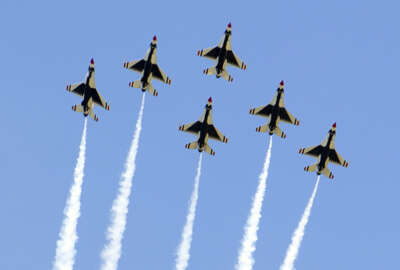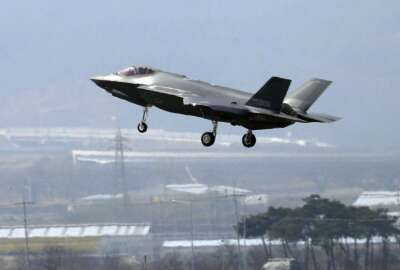
Air Force will prioritize maintainers if force grows
The Air Force will hire more people to take care of its weapons systems if it can get Congress to pay for more airmen.
The Air Force will increase the number of people trained to maintain and repair air craft and other weapons systems over any other position if the service gets more funds to grow.
The Air Force is trying to shore up its shortage of 4,000 maintainers if Congress will give it the funds it needs to build up its force, said Air Force Chief of Staff Gen. David Goldfein during a Jan. 18 AEI event in Washington.
“We have a prioritized list on exactly where those [extra] airmen would go,” Goldfein said. “Because this is a focus on rebuilding readiness and because people are our number one limitation into rebuilding readiness I’m going to put them first and foremost where I need them on the flight line in maintenance so I can generate the sorties I need.”
The Air Force has turned to contractors in the past to make up for the maintainer shortage, adding expense to the service’s budget.
The 2017 defense authorization act allows the Air Force to increase its active duty force from 317,000 to 321,000, but appropriators still haven’t passed any bills actually giving the service money for that purpose.
Still, Goldfein said in the past that the Air Force may need 20,000 or 30,000 more airmen to keep up with the threat environment.
A proposed defense budget created by Senate Armed Services Chairman John McCain (R-Ariz.) recommends increasing the Air Force’s size by 20,000 over five years.
Maintainers aren’t the only jobs Goldfein is prioritizing. He said the second area of importance is building up the Air Force’s cyber airmen.
“We’re only about 60 percent complete with the buildup of our cyber mission teams that we contribute and all the services are doing the same thing when it comes to the cyber mission,” Goldfein said.
Goldfein’s third area of personnel prioritization relied around space forces.
“We are the service that is responsible for a vast majority of the space capability and I’ve got to make sure we can fight a war on the surface that extends into space,” Goldfein said.
Space is an area Goldfein said has huge growth potential and the Air Force is figuring out how to “normalize” the space domain.
That means working with Congress on organization and investment. Goldfein said the Air force needs to talk about how to organize, train and equip the space enterprise for the future.
The service also needs to figure out how to operate in space.
“Operations in space are a combination of looking at all the stakeholders and players in space – commercial, allies and partners in space,” Goldfein said.
The Air Force also needs to focus on acquisition and policy in space.
But while the service is figuring out how to add airmen to either the air, cyber or space realm, Goldfein wants those in the force to be less stovepiped and more interchangeable between the three areas.
Last fall Goldfein announced the creation of multiple tasks forces to look into training airmen in all three realms.
The joint training task force will focus increasing the joint readiness of airmen. Goldfein said the Air Force is needed for all of the threats to the U.S. It would pair with the Army in a conflict with Russia and primarily with the Navy in a conflict in the Pacific.
Goldfein said airmen are staying too long in their technical career fields because it takes them too long to get to the point of becoming instructors. That comes at the cost of joint training, though. The second task force will look into how to make joint training more ubiquitous and implement it earlier in Air Force careers.
The task forces are supposed to start work this month.
Copyright © 2025 Federal News Network. All rights reserved. This website is not intended for users located within the European Economic Area.
Scott Maucione is a defense reporter for Federal News Network and reports on human capital, workforce and the Defense Department at-large.
Follow @smaucioneWFED




